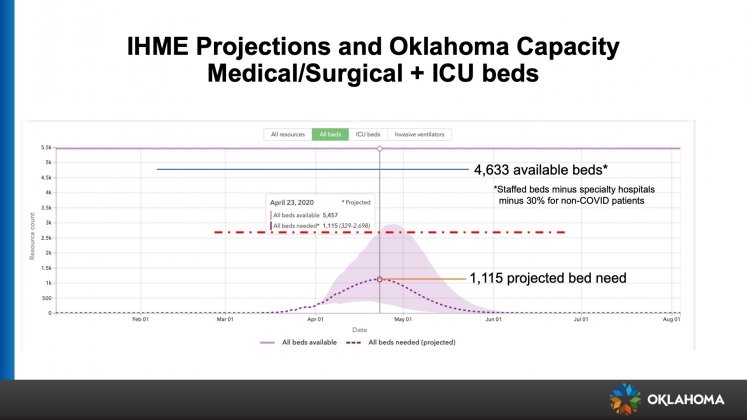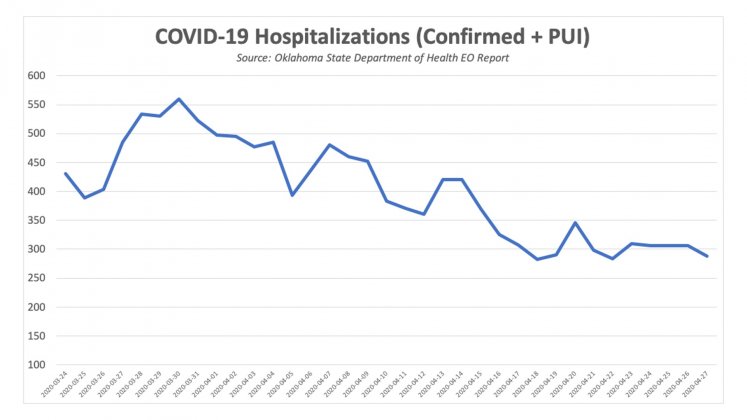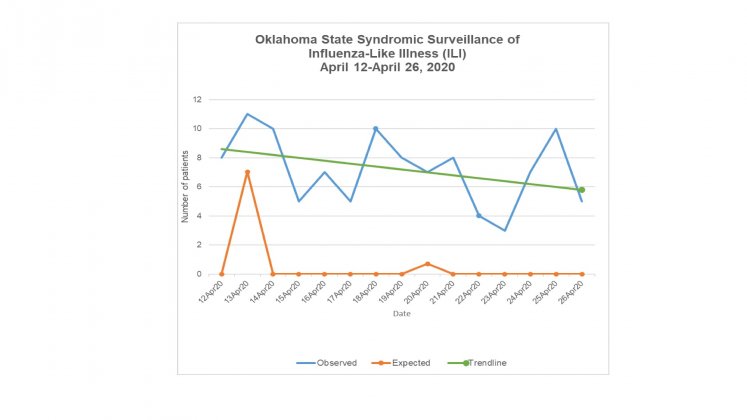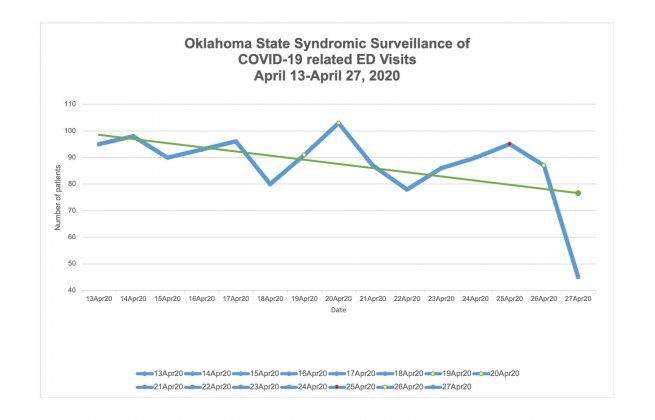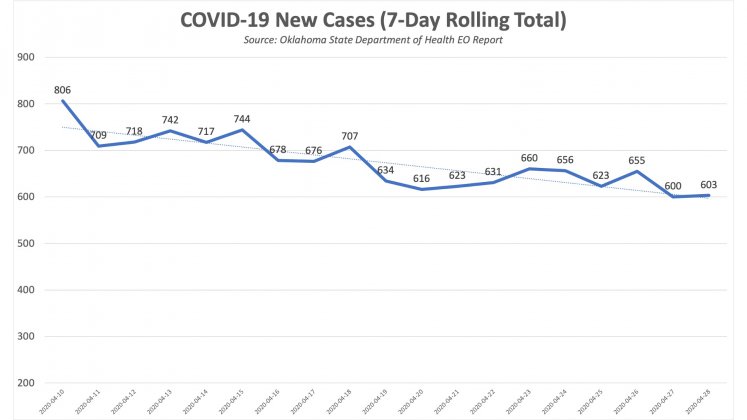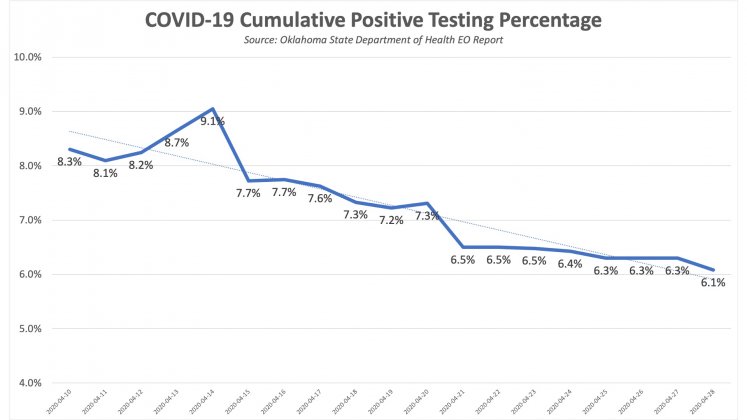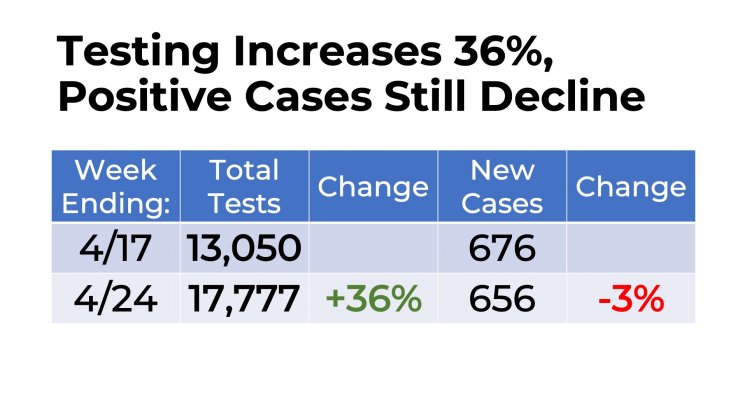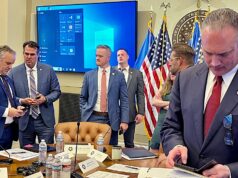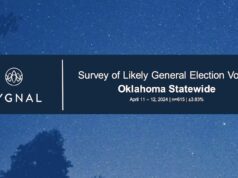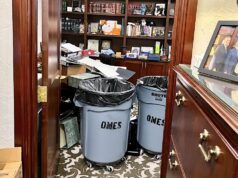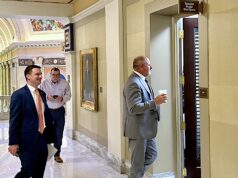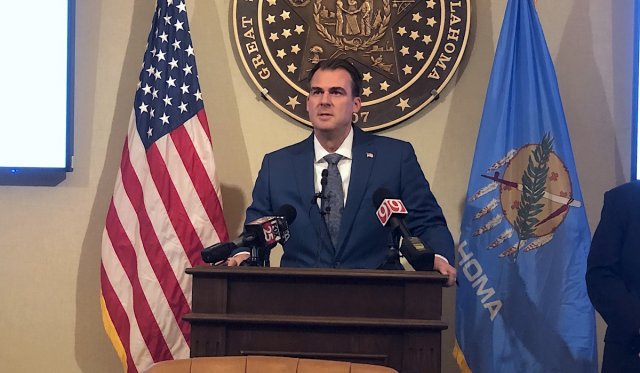
Running through a series of slides showing graphs, charts and trends about the state’s COVID-19 cases, Oklahoma Gov. Kevin Stitt reiterated his belief this morning that data indicate certain state businesses should begin re-opening May 1. His team also outlined plans to implement saliva testing and administer tests to all long-term care home staff and residents.
“We still have coronavirus in the United States. It is still in the state of Oklahoma. We are still going to have people get this. We are still going to have positive cases, but our rate of positive cases continues to decline,” Stitt said. “Because Oklahomans did such a fantastic job of social distancing, working at home and making sacrifices (…) we have flattened the curve.”
Stitt quickly turned Tuesday’s press conference over to Deputy Secretary of Science and Innovation Elizabeth Pollard, who said today the state will surpass 60,000 processed tests for COVID-19 and made other announcements.
“The diagnostics laboratory at OSU will be submitting an E-Rate (application) for saliva-based [polymerase chain reaction] testing,” Pollard said. “As early as tomorrow, we will begin testing saliva-based samples. This is a huge benefit, especially for those long-term-care facility residents where getting nasal swabbed can be challenging and uncomfortable.”
Pollard said OU and OSU researchers have been 3D-printing nasal swabs to increase the state’s access to swabs. She also announced new testing efforts, which she said will eventually focus on ZIP codes with high rates of COVID-19 infection.
“We have also begun doing serological testing and started some surveillance testing randomly across the state two weeks ago,” Pollard said.
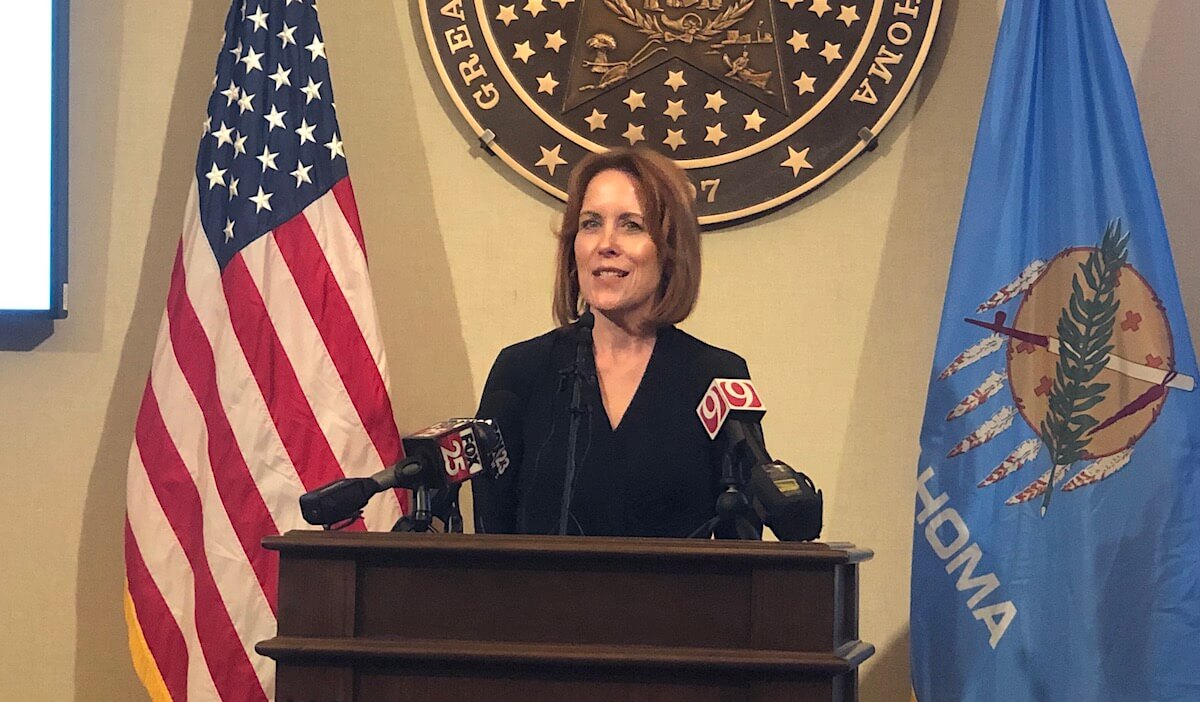
Nursing homes ‘really present unique challenges’
State health leaders are also devoting additional resources to assist nursing homes and other long-term care homes, which often house disabled and developmentally disabled people.
“The long-term care response team is driven by a single mission: that mission is to protect our most vulnerable citizens through mitigation and prevention,” said Deputy Secretary of Health Carter Kimball.
Kimball noted four primary areas of focus:
- ensure access to personal protective equipment
- achieve universal testing at long-term care homes
- refine admission and discharge protocols
- support facilities with staff and/or supplies
“Our goal is to test all 42,000 long-term care residents and staff across our state,” Kimball said.
Stitt said he met with leaders of a nursing home association Monday.
“Nursing homes and long-term care facilities really present unique challenges for a lot of states across the country,” Stitt said.
Indeed, The Frontier’s Kassie McClung tweeted Monday evening that 79 out of Oklahoma’s 197 coronavirus-related deaths (or 40.1 percent) can be linked to long-term care facilities.
Tuesday, the Oklahoma State Department of Health announced 10 additional deaths moments before Stitt began his press conference.
State will plan to maintain PPE climate control
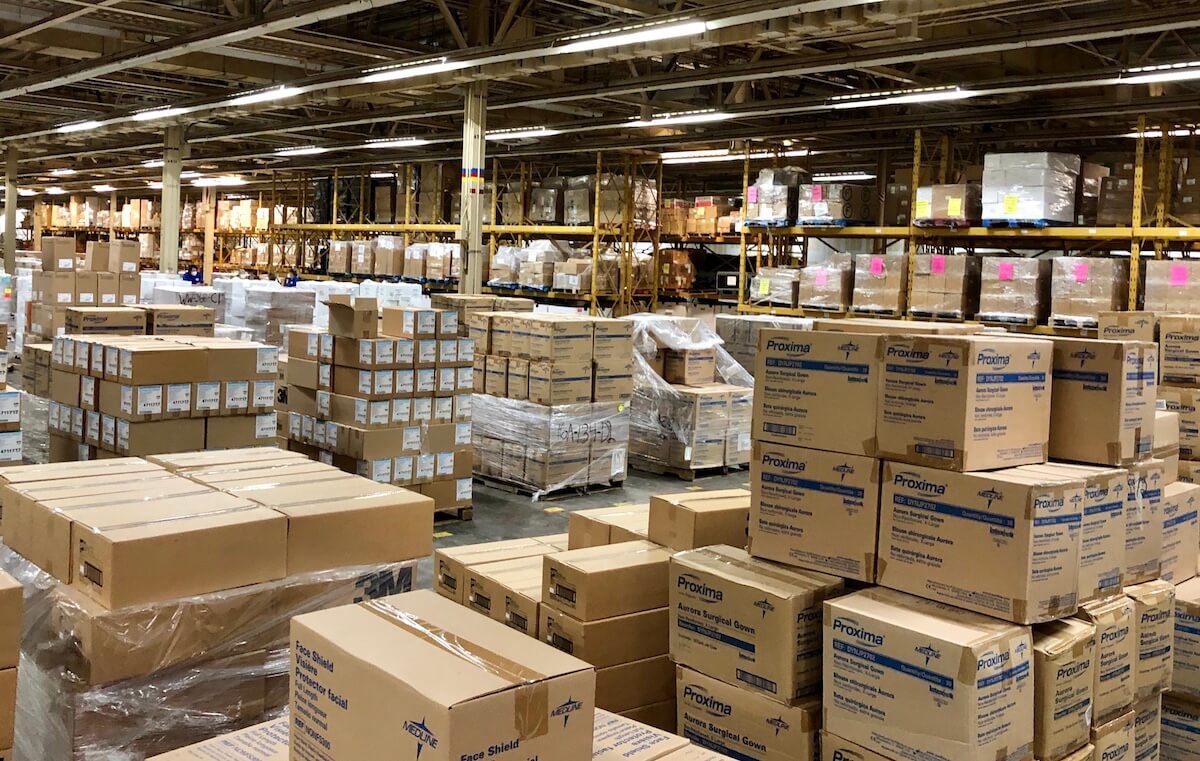
Access to PPE such as gloves, masks, gowns and face shields has been of particular concern for long-term care facilities, and Kimball said deliveries from the state’s PPE stockpile started going to those facilities Monday.
“We were able to push allotments out to every facility in the state,” Kimball said. “That should supply them with five to seven days of PPE.”
The state’s stockpile is managed within a Oklahoma County warehouse to which media were granted access April 7 on the condition they would not reveal its location. As temperatures rise across Oklahoma, Secretary of Health and Mental Health Jerome Loughridge said his team will be monitoring the warehouse’s climate to ensure PPE shipments are kept under appropriate conditions. Many types of PPE contain temperature guidance for storage, which can set parameters such as -4 degrees to 86 degrees Fahrenheit.
“To the extent that is an issue, we will certainly move those and intentionally receive those shipments in (safely),” Loughridge said. “We know those are moving in on a daily basis, but to the extent that jeopardizes them we have protocols in place to make sure that we stay within the boundaries.”
After the press conference, Loughridge confirmed the warehouse’s large storage area does not have central air conditioning but that other rooms of the facility are climate controlled.
“We’ve worked far too hard (to obtain PPE shipments) to jeopardize those,” Loughridge said.
Loughridge and Stitt also answered questions about a $2 million state purchase of hydroxychloroquine made in March when some medical organizations hypothesized it could be helpful in treating COVID-19. That appears not to be the case now.
“I was being proactive to try and protect Oklahomans,” Stitt said, adding that his team relied on medical experts when deciding whether to seek the drug, as the federal government and other states were doing.
Loughridge was asked what will happen to the drug shipment now.
“As you probably know, hydroxychloroquine is useful for any number of other diseases,” Loughridge said, referencing lupus specifically. “It was not a waste.”
At the beginning of the day’s press conference, Stitt discussed a series of slides (embedded below) and emphasized his administration’s focus on data-driven decisions regarding how business sectors will re-open in May.
“If we see anything moving in another direction, we can always extend those phases out,” Stitt said of his plan, which would progress in steps every 14 days if trends remain headed downward.
Charts and graphs provided April 28










